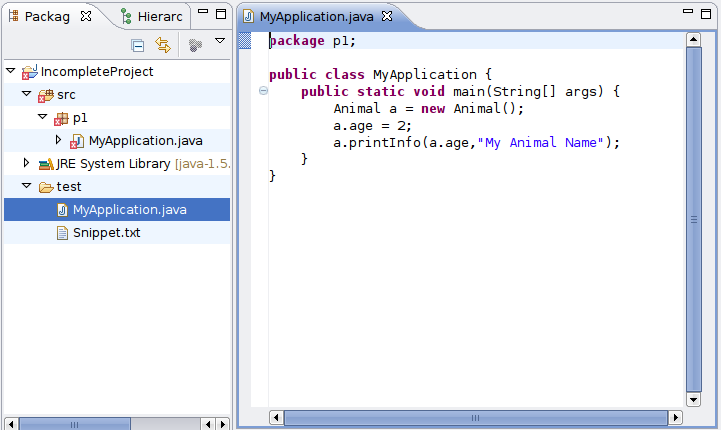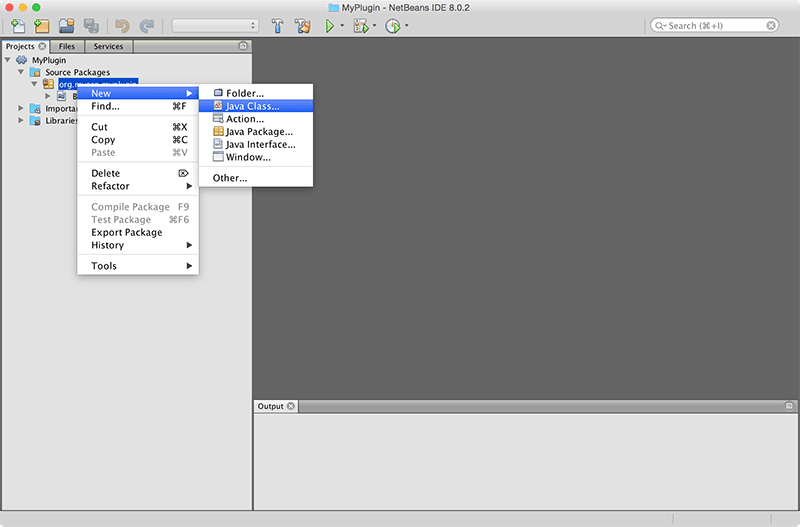


If it returns false, the key is no longer valid and the loop can exit. When an event occurs, the key is signaled and placed into the watcher's queue. After processing its events, we need to put it back into a ready state by invoking its reset() method.

And at last, we implement an infinite loop to wait for incoming events.Next, we register a Path instance for the folder to be monitored with the types of events that we are interested in.File f6new File('yyy/aaa') f6.mkdirs() Length1782 bytes NameFileTest.java. The first step is to create a new WatchService by using the newWatchService() method of the FileSystem class. Output: String nm f3.list() ('List of Files.When the service detects an event of interest, it is forwarded to the registered process and handled as needed. When registering, we tell the service which types of events we are interested in: file creation, file modification, or file deletion. It enables us to register a folder with the watch service. The package provides a file change notification API, called the Watch Service API. While ((byteRead = inputStream.read()) != -1) Try to run this program and compare the time with the ones using legacy File I/O (on big files) you will see NIO performs much faster.Learn more about watching files with Java NIO. Well achieve this by calling the File::mkdir method on a new File object representing the directory to create: File newDirectory new File (TEMPDIRECTORY, 'newdirectory' ) assertFalse (newDirectory.exists ()) assertTrue (newDirectory.mkdir ()) To ensure our directory doesnt exist yet, we first used the exists () method. OutputStream outputStream = new FileOutputStream(outputFile) InputStream inputStream = new FileInputStream(inputFile) ("Please provide input and output files") * Copy one file to another using low level byte streams, one byte at a time. The source file and destination file are provided from command line’s arguments: import java.io.* Reading and Writing Binary Files Using FileInputStream and FileOutputStreamThe following examples use the FileInputStream and FileOutputStream classes to perform low level binary I/O.This program copies one file to another, one byte at a time.
JAVA NEW FILE CODE
Whereas the BufferedInputStream and BufferedOutputStream are more efficient by buffering the input stream and output stream to reduce the number of calls to the native API.Now, let’s see some code examples. Moving down, the implementation classes FileInputStream and FileOutputStream are for reading and writing streams of raw bytes, one or multiple bytes at a time. write(byte): writes the specified array of bytes to the output stream.write(int): writes the specified byte to the output stream.Similarly, the abstract class OutputStream defines two primary methods for writing bytes to an output stream: This method returns -1 if there’s no more data or the end of the file is reached. 1 Answer Sorted by: 2 You can set the values in a property file and modify it on every system. read(byte): reads a chunk of bytes to the specified byte array, up to the size of the array.Return -1 if the end of the file is reached. read(): reads one byte of data, returns the byte as an integer value.The following class diagram depicts the main classes in the legacy File I/O API that are designed for working with binary files: You can notice that these classes implement the AutoCloseable interface, which means that we can use the try-with-resources structure to close these streams automatically.At the top of the hierarchy, the abstract class InputStream defines two primary methods for reading bytes from an input stream: All byte stream classes are descended from the abstract classes InputStream and OutputStream. Understanding Byte StreamsWe use byte streams to read and write data in binary format, exactly 8-bit bytes. The legacy API (classes in the java.io.* package) is perfect for manipulating low-level binary I/O operations such as reading and writing exactly one byte at a time, whereas the NIO API (classes in the java.nio.* package) is more convenient for reading and writing the whole file at once, and of course, faster than the old File I/O API.
JAVA NEW FILE HOW TO
In this Java File IO tutorial, we show you how to read and write binary files using both legacy File I/O API and new File I/O API (NIO).


 0 kommentar(er)
0 kommentar(er)
